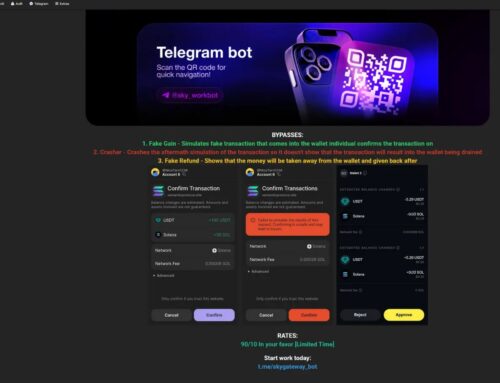
Malicious PyPI and npm Packages Discovered Exploiting Dependencies in Supply Chain Attacks
The software supply chain, a foundational element of modern development, faces an insidious and escalating threat: malicious packages lurking within public repositories. These aren’t just isolated incidents; they represent a sophisticated attack vector with the potential to compromise countless systems downstream. Cybersecurity researchers have recently uncovered a new wave of such threats targeting both the Python Package Index (PyPI) and npm registries, demonstrating a multi-stage approach to persistence and code execution.
Understanding the Threat: Malicious PyPI and npm Packages
The rapid proliferation of open-source components has fueled innovation, but it has also created a fertile ground for supply chain attacks. Attackers are increasingly leveraging trusted package managers like PyPI for Python and npm for Node.js to distribute malicious code. Their strategy often involves masquerading as legitimate projects or injecting malicious functionality into seemingly benign dependencies.
A prime example of this emerging threat is the recently identified malicious package on PyPI, named termncolor. This package, at first glance, might appear innocuous. However, its true nefarious nature is realized through a cleverly designed dependency chain.
Multi-Stage Malware Operation: The Zscaler Discovery
Cybersecurity firm Zscaler played a crucial role in unearthing this sophisticated attack. Their analysis revealed that termncolor doesn’t directly contain the primary malicious payload. Instead, it relies on a dependency package named colorinal. This dependency-driven approach allows for a multi-stage malware operation, making detection and analysis more challenging.
The coordinated effort between termncolor and colorinal enables the malicious actor to establish persistence on compromised systems and achieve arbitrary code execution. Such capabilities grant attackers significant control, allowing them to exfiltrate sensitive data, deploy ransomware, or establish backdoors for future access.
Tactics, Techniques, and Procedures (TTPs)
This incident exemplifies several common TTPs used in software supply chain attacks:
- Dependency Confusion/Typosquatting: While not a direct typosquatting incident in this specific case (where attackers register similar names to popular packages), the use of a seemingly legitimate-sounding dependency (colorinal) illustrates the a
ttempt to blend in. - Multi-stage Delivery: The attacker cleverly segregates the malicious functionality across multiple packages (termncolor and colorinal). This forces security analysts to look beyond the initial package, making detection more complex.
- Persistence Mechanisms: Establishing persistence is critical for attackers to maintain access to compromised systems even after reboots or user logoffs. The specific mechanisms employed by colorinal would need further deep dive, but typically involve scheduled tasks, modifying startup scripts, or injecting into system processes.
- Code Execution: The ultimate goal of such attacks is often to execute arbitrary code on the victim’s machine, allowing for further payload delivery, data exfiltration, or system manipulation.
Remediation Actions for Developers and Security Teams
Mitigating the risk of malicious package infections requires a proactive and multi-layered approach. Organizations must implement robust security practices across their development lifecycle.
Immediate Steps:
- Audit Dependencies: Immediately scan all your Python (`requirements.txt`, `Pipfile`) and Node.js (`package.json`) projects for the presence of termncolor and colorinal. If found, remove them and replace with legitimate, verified alternatives.
- Review Download Logs: Check your build server and developer workstation logs for any instances of these packages being downloaded.
- Isolate Compromised Systems: Any system found to have installed these malicious packages should be immediately isolated from the network to prevent further lateral movement or data exfiltration.
- Perform Forensic Analysis: Conduct a thorough forensic analysis on compromised systems to understand the full extent of the breach, including what data may have been accessed or exfiltrated, and what persistence mechanisms were established.
Long-Term Strategies:
- Software Composition Analysis (SCA): Implement SCA tools to automatically identify and evaluate the security posture of open-source components used in your projects. These tools can flag known vulnerabilities and suspicious packages.
- Dependency Policy: Establish clear policies for dependency management, including vetting new packages and regularly reviewing existing ones.
- Supply Chain Security Tools:
Tool Name Purpose Link OWASP Dependency-Check Analyzes project dependencies for known vulnerabilities. https://owasp.org/www-project-dependency-check/ Snyk Developer-first security for open source, containers, and IaC. https://snyk.io/ Sonatype Nexus Lifecycle Automated open source governance and supply chain automation. https://www.sonatype.com/products/sonatype-nexus-platform/nexus-lifecycle npm audit Built-in npm command to check for vulnerabilities in dependencies. https://docs.npmjs.com/cli/v8/commands/npm-audit pip-audit Audits Python environments and requirements for known vulnerabilities. https://pypi.org/project/pip-audit/ - Least Privilege: Ensure build systems and CI/CD pipelines operate with the principle of least privilege, limiting their access to only what is necessary for their function.
- Network Segmentation: Segment your network to limit the blast radius of a potential compromise.
- Employee Training: Educate developers and security teams on the risks of supply chain attacks and best practices for securing development environments.
- Source Code Integrity: Implement measures to verify the integrity of downloaded packages, such as cryptographic signatures and checksums, where available.
Conclusion
The discovery of malicious packages like termncolor and colorinal underscores the persistent and evolving threat of software supply chain attacks. As organizations increasingly rely on open-source components, the responsibility for securing these dependencies falls not only on package maintainers but also on adopting robust internal security practices. Vigilance, combined with proactive security measures and the strategic use of specialized tools, is paramount in safeguarding against these sophisticated threats and ensuring the integrity of your software.





